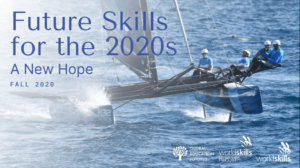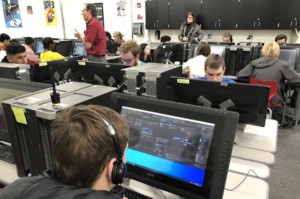10 Megatrends Shaping the World
Next to the Whitney Houston and Steve Windood CDs on your bookshelf you probably have a copy of Megatrends, the 1988 classic by John Naisbitt. If you are as old as me, Peter Senge had just rocked our world with The Fifth Discipline and systems thinking and you were primed for Nesbitts big thinking. Megatrends was an effort to understand the present in order to predict the future with a principal focus on how an information society will be different from the prior industrial one.
The 10 trends identified were:
(1) Becoming an information society after having been an industrial one (R, at least for 1/7 of the world’s population)
(2) From technology being forced into use, to technology being pulled into use where it is appealing to people (Y)
(3) From a predominantly national economy to one in the global marketplace (R)
(4) From short term to long term perspectives (N, not even)
(5) From centralization to decentralization (S, not so much)
(6) From getting help through institutions like government to self-help (N, just starting to wrestle with entitlements)
(7) From representative to participative democracy (S, still working on the first part)
(8) From hierarchies to networking (S, long live Facebook)
(9) From a northeastern bias to a southwestern one (S, more west to east)
(10) From seeing things as “either/or” to having more choices.(S)
More than a decade later we can give Naisbitt a solid ‘B’ getting a few things right (R), getting partial credit for getting most things sort of right (S), and missing badly in regards to his prediction that most of us would have a longer term perspective.
I think there are six megatrends that will shape the next 50 years together on this planet. On a more practical level, these are less meta-trends and more economic drivers.
(1) Personal technology. As Naisbitt pointed out (#2), access to personal communication technology is transformational—just ask one of the 650 million people in India have cell phones.
(2) Personal digital learning. With broadband access, it is possible for anyone anywhere to learn almost anything. Informal learning opportunities are exploding and right behind them are low cost online credentialing options that will expand access to quality secondary learning to the 500 million young people that lack access today. Broadband, cheap tablents, open content, and inexpensive blended schools will rapidly expand access to post secondary learning and information economy careers in emerging economies.
(3) Representative capitalism. The year of 2011 will go down as the year of the MENA revolutions (Middle East & north Africa)—that may result in more representative governments but we won’t know for sure for a few years. What we can be sure of is, that like China, even if governments aren’t fully representational they will expand access to commerce.
(4) Green revolution. The combination of modern agricultural science and communications technology has helped to feed ballooning populations and freed hundreds of millions from subsistence farming.
(5) Global economy. As Naisbitt predicted (#3), a global economy and communication technology allows Tanzanian farmers to form a coop, plan crops, and market produce successfully to EU markets.
(6) Biotech. Breakthroughs in health will result in less infant mortality, longer life spans (but lower birthrates as well).
The combination of these six trends is lifting hundreds of millions of people out of dire poverty and creating a global middle class (about the same time that it appears to be shrinking in the U.S.).
(7) Cleantech. After lots of hype, conservation and renewable energy sources are substantial enough that it has curve bending potential. However, if the burgeoning global middle class consumes at the U.S. rate, clean tech trends get swamped and many of us will be living in swamps.
(8) Go East. When you put all these together, you get the big geo-political megatrend from west to east. By 2016, China will become the largest economy in the world. India and China will soon have middle class populations larger than the population of the U.S.
If those megatrends are close to right, one important conclusion is that education, or more broadly learning, will be key to connecting people and regions to the global economy. That’s why I think the work being done on the learning innovation agenda is at least as important to global prosperity and wellbeing as biotech and cleantech.
We’ll see a few edtech clusters emerge globally where there is a confluence of learning scientists, investors, entrepreneurs, and thoughtful public officials. Some will be anchored by the elearning leaders like K12, Kaplan, Connections, and Blackboard in the Washginton DC area. Some will be anchored by foundations like Donnell-Kay in Denver (hosting a blended learning summit today). Some clusters will be anchored by great universities—Harvard is hosting a learning innovation summit tomorrow.
Expanding access to personal digital learning is one of the most important world shaping megatrends. People, schools, states, and countries that embrace digital learning will, as President Obama has urged, “Win the future.”






0 Comments
Leave a Comment
Your email address will not be published. All fields are required.